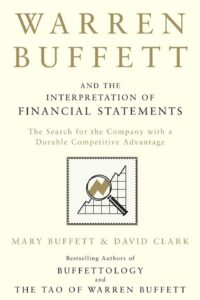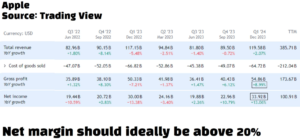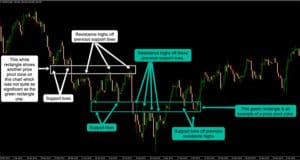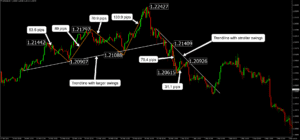Warren Buffett is one of the most successful investors and wealthiest men alive; therefore, studying his opinions regarding the financial markets is vital.

We’ll explore 3 significant takeaways from the book Warren Buffett and the interpretation of financial statements by Mary Buffett and David Clark. In the second half of the video we’ll take a look into his incredible background story.
Warren Buffett says understanding financial statements is essential for investing in individual stocks, as they are the language of business. The book provides guidance that can benefit both beginners and advanced investors.
One of Buffett’s most impressive skills is to find companies with a sustainable long-term competitive advantage. For example, Coca-Cola has been popular for over 120 years, and the product has remained similar over much of the time.

Examining the previous decade is good; however, looking at the past 100 years provides clear proof of durability. Also selling the same product over many years reduces production costs because changing machinery, training staff and spending on R&D all decrease.
Buffett is looking for these key factors for consistency:
Growing earnings, low debt, low capital expenditure, and consistent profitability.
Additionally, the book provides guidance on what companies Warren likes to avoid, regardless of how cheap they may seem. After following the key takeaways, you’ll be in a much better position to understand a company’s true value.
Takeaway 1 – The Income statement
Ideally, Buffett is looking for consistency in net earnings over the long run. Also, he’s looking for a gross margin stronger than that of the closest competitors and over 40%. Let’s look at Apple as an example, as it’s currently the largest holding of Berkshire Hathaway.
You can see here that Apple has over 33 billion dollars in net earnings and a gross margin increase of 8.99% for the first quarter of 2024.

If the gross margin is high, the company is more scaleable, as the more it sells, the greater the profitability. However, we must also look at the net margin as this figure gives insight into the competitive advantage the company has. Ideally, Buffett regards a net margin greater than 20% as a strong result.
Takeaway 2 – The Balance sheet
To help find steady growth, Buffett looks for strong retained earnings, which indicate that the company is profitable and finding good value in reinvesting. The retained earnings come from net income; however, to measure how efficiently a company is using reinvested earnings, we can look at net income and return on equity.
Although Apple’s retained earnings have not been great recently, the company has increased dividends and initiated a share repurchase program.
Buffett also looks at the return on net tangible assets and for little debt. Except for banks, most businesses are unlikely to require large amounts of debt to expand.
Instead, the company can grow by reinvesting through a strong cash flow. Generally, you want to look for a company that can pay off its long-term debt within 4 or 5 years of earnings.
Takeaway 3 – The Cashflow statement
Next, we’ll look at the cash flow statement, which helps give a deeper insight into the ins and outs of money. An essential figure to be aware of is capital expenditure, which you want to be as low as possible as a percentage of net earnings. Capital expenditure includes spending on property, plant, and equipment.
Ideally, capital expenditures should be less than 50% of net earnings to be considered acceptable or lower than 25% to be very good. However, you must consider whether the company is spending the capital wisely on growing the business.
We can examine why retained earnings have not been growing much. If the company distributes a relatively appropriate amount of cash to shareholders, including div

idends and share buybacks, then that’s a good sign. However, you must be cautious if the company is spending retained earnings on other excessive purchases.
In addition to being aware of the financial statements, the book gives valuable indications on when to sell a stock. It’s well known that Buffett likes to hold onto investments for as long as possible; however, there are times when it’s logical to sell.
Firstly, it could be because you require money for a better opportunity. Remember, there’s always an opportunity cost to every purchase. You have to be aware of opportunity costs, particularly during bear markets, as there are more opportunities over this period.
Secondly, you want to be aware of market phases because even a great company can be a bad investment if bought during a massive bull market. In the book, it’s recommended that you start looking to sell if a stock goes above a 40 PE ratio or higher, regardless of whether you think it’s a good company.
Thirdly, you can examine when a company starts losing its competitive advantage, or moat, as Buffett likes to call it. The economy is continuously changing, so it’s essential to be aware of market trends and the rapid evolution of technology.
When looking for a steady long-term competitive advantage, it’s important to look at growing profit margins and net earnings.
If you enjoyed reading this make sure you check out more content from the blog.






